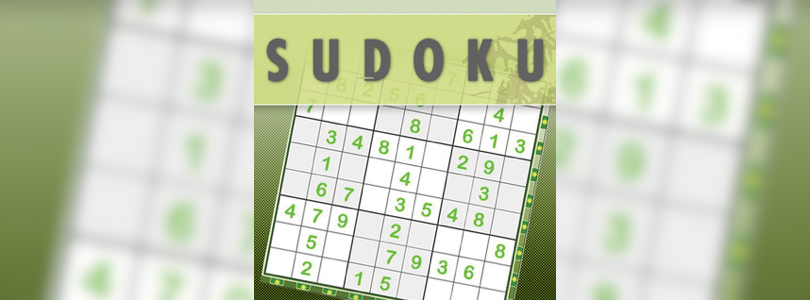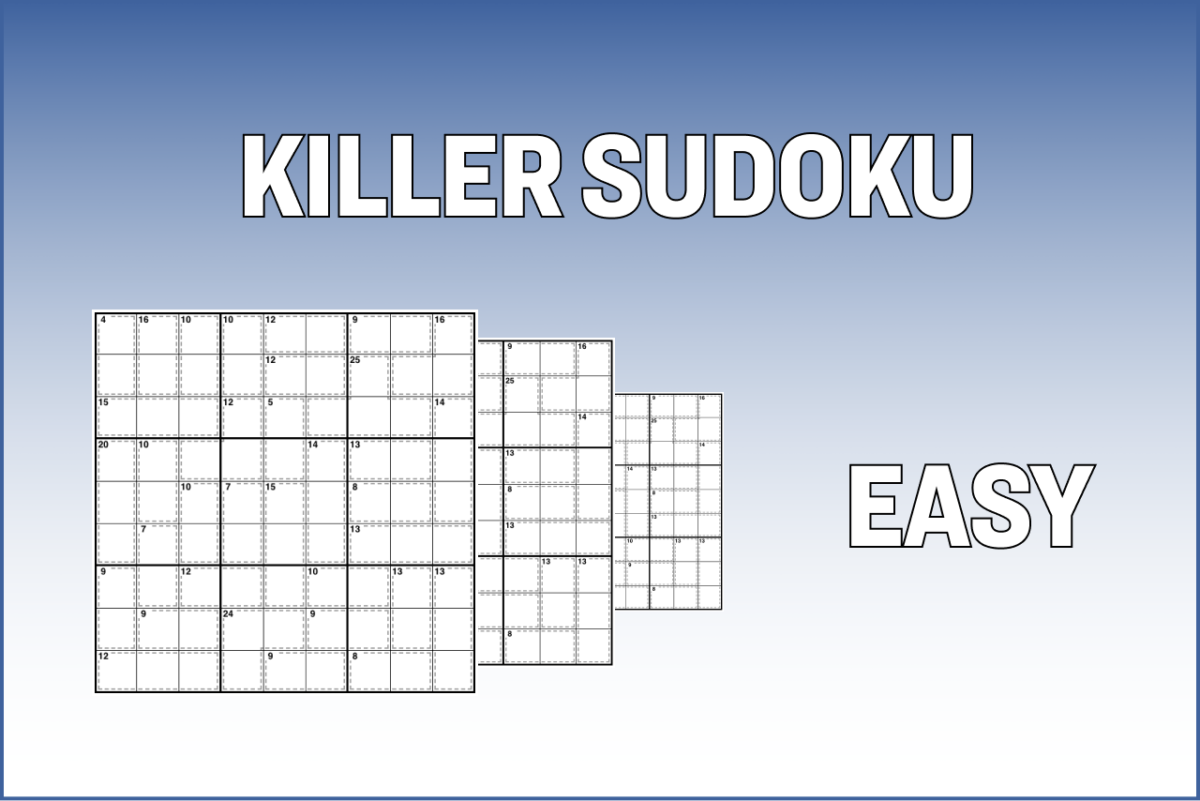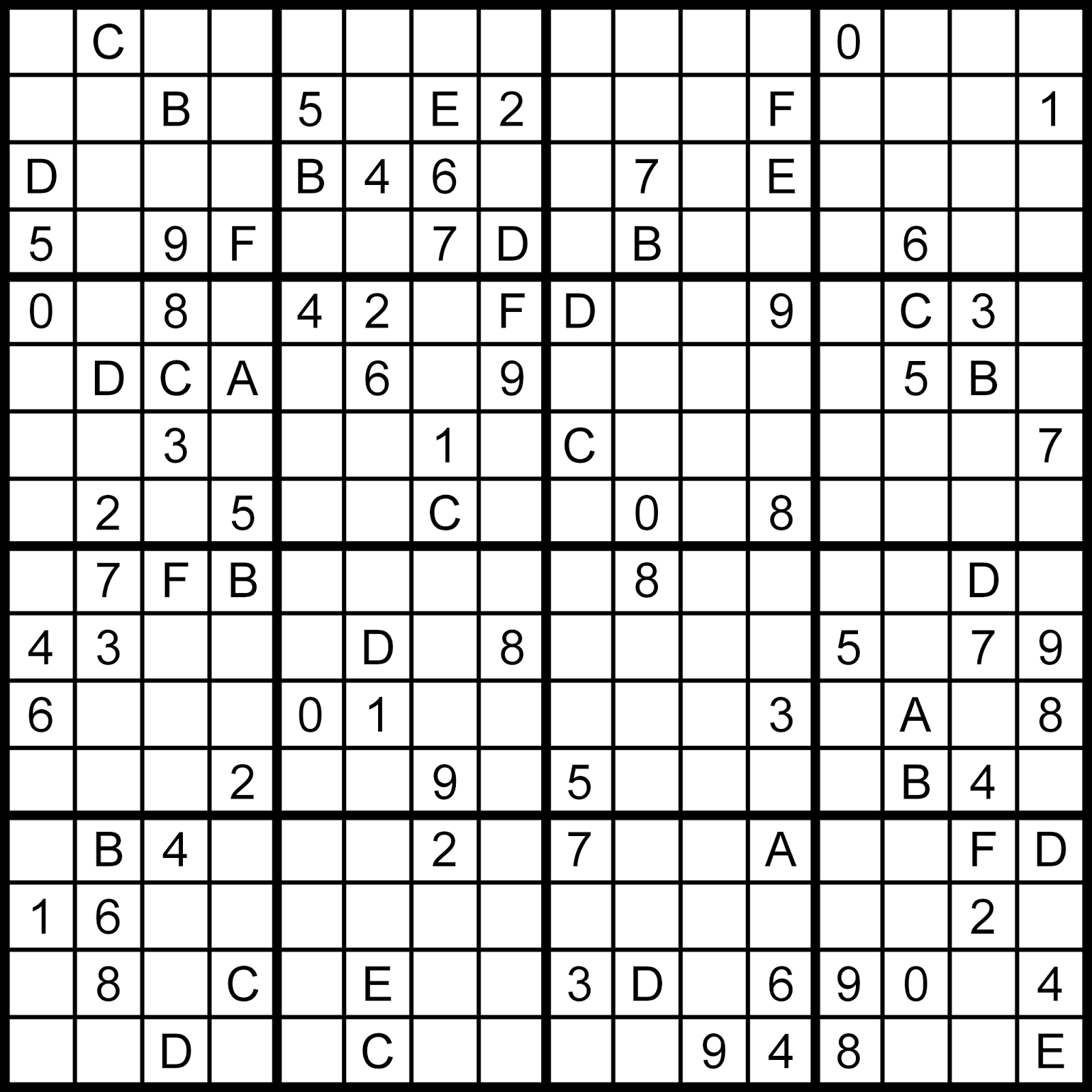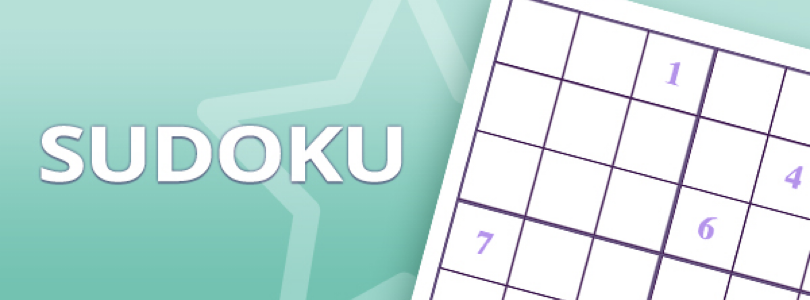Embark on a journey of discovery with epoch sudoku, a captivating twist on the traditional puzzle that introduces the concept of epochs. In this engaging exploration, we dive into the intricacies of epoch sudoku, unravel the strategies for solving these puzzles, and uncover the numerous benefits it offers.
Introduction to Epoch Sudoku

Epoch Sudoku is a variant of the popular Sudoku puzzle that adds a new dimension to the traditional game. In Epoch Sudoku, players are not only challenged to fill in the grid with numbers from 1 to 9, but they must also consider the concept of epochs.
Unlike traditional Sudoku, where the grid is divided into 9 smaller 3×3 grids, Epoch Sudoku introduces the concept of epochs, which are larger regions that consist of multiple 3×3 grids. These epochs can overlap and create a more complex puzzle-solving experience.
The Concept of Epochs
In Epoch Sudoku, each epoch is represented by a different symbol or color, making it visually distinct from the rest of the puzzle. The goal is to fill in each epoch with the numbers 1 to 9, just like in traditional Sudoku, while also ensuring that no number is repeated within each epoch.The
introduction of epochs adds a new challenge to the puzzle, as players must now not only consider the numbers within each epoch but also the interactions between epochs. This requires a different approach to strategy and logical thinking compared to traditional Sudoku.
Types of Epoch Sudoku Puzzles
Epoch Sudoku puzzles can come in various forms, each with its own unique configuration of epochs. Here are a few examples:
- Classic Epoch Sudoku:This type of Epoch Sudoku puzzle follows the traditional 9×9 grid layout, with three epochs that overlap in a diagonal pattern.
- Mega Epoch Sudoku:In this variation, the puzzle is larger, typically with a 12×12 or 16×16 grid, and contains multiple epochs that cover the entire grid.
- Irregular Epoch Sudoku:Irregular Epoch Sudoku puzzles have epochs that do not follow a strict rectangular shape. They can be irregularly shaped or have overlapping regions that add an extra layer of complexity.
Each type of Epoch Sudoku puzzle offers a unique challenge and requires players to think strategically and adapt their solving techniques to the specific configuration of epochs.
Have you ever come across a crossword clue that mentions a sudoku grid unit? It can be quite confusing if you’re not familiar with sudoku terminology. But don’t worry, we’ve got you covered. Check out this informative article on sudoku grid unit crossword clue to learn all about the different units in a sudoku grid and how they relate to crossword clues.
Understanding these units will make solving sudoku puzzles a breeze!
Solving Epoch Sudoku Puzzles

Epoch Sudoku puzzles can be challenging, but with the right strategies, they can be solved successfully. In this section, we will discuss some effective techniques to tackle these puzzles and highlight the importance of identifying and utilizing epoch patterns.To begin solving an Epoch Sudoku puzzle, it is essential to understand the basic rules of Sudoku.
Each row, column, and 3×3 grid must contain the numbers 1 to 9, without repetition. The goal is to fill in the empty cells with the correct numbers to complete the puzzle.
Identifying and Utilizing Epoch Patterns
Epoch patterns are crucial in solving Epoch Sudoku puzzles. An epoch pattern refers to a repeating sequence of numbers that occurs in the same order throughout the puzzle. By identifying these patterns, you can determine the possible locations for specific numbers and narrow down the options.One
strategy to identify epoch patterns is to focus on rows and columns that have a significant number of filled cells. Look for recurring sequences of numbers within these rows and columns and note their positions. By doing this, you can identify the epoch patterns and make educated guesses about the numbers that should fill the remaining empty cells.
Approaching Different Types of Epoch Puzzles
There are different types of Epoch Sudoku puzzles, each with its own set of rules and challenges. Here are some approaches to tackle common types of Epoch Sudoku puzzles:
1. Classic Epoch Sudoku
In this type, the epoch pattern repeats in a regular 3×3 grid. Start by identifying the epoch pattern in each grid and use it to fill in the missing numbers. Pay attention to the interactions between grids to ensure consistency across rows, columns, and grids.
2. Diagonal Epoch Sudoku
Similar to the Classic Epoch Sudoku, this type includes diagonal constraints. In addition to the regular rules, each diagonal line must also contain the numbers 1 to 9 without repetition. Use the epoch patterns in the diagonals to guide your solving process.
3. Irregular Epoch Sudoku
In this variation, the puzzle contains irregularly shaped grids instead of the standard 3×3 grid. Identify the epoch patterns within each irregular grid and use them to solve the puzzle. Pay attention to the interactions between irregular grids as well.Remember
When it comes to sudoku, the first step is always the sudoku entry. This is where you input the numbers into the grid and start solving the puzzle. If you’re not sure how to begin, you can check out this helpful guide on sudoku entry . It provides step-by-step instructions on how to fill in the grid and get started on your sudoku journey.
So grab a pen and get ready to tackle those numbers!
to use the process of elimination and logical reasoning while solving Epoch Sudoku puzzles. Make sure to update the epoch patterns as you fill in more numbers to refine your solving strategy.Keep practicing and experimenting with different techniques to become more proficient in solving Epoch Sudoku puzzles.
With time and experience, you will develop a better understanding of the patterns and strategies involved, leading to more successful completions.
Tips and Tricks for Mastering Epoch Sudoku

Epoch Sudoku is a challenging variant of the classic Sudoku puzzle that requires a different approach and strategy. Whether you are a beginner or an experienced Sudoku player, mastering Epoch Sudoku can take some time and practice. In this section, we will provide you with some tips and tricks to help you get started and improve your skills in solving Epoch Sudoku puzzles.
Getting Started with Epoch Sudoku
Epoch Sudoku may seem intimidating at first, but with the right approach, you can quickly get the hang of it. Here are some tips for beginners:
- Start with the basic rules: Familiarize yourself with the rules of Sudoku and understand how they apply to Epoch Sudoku. This will give you a solid foundation to build upon.
- Focus on a single epoch: Epoch Sudoku consists of multiple grids called epochs. Begin by solving one epoch at a time before moving on to the next. This will help you break down the puzzle into smaller, more manageable parts.
- Look for unique candidates: Identify cells that have only one possible number based on the given clues. Fill in these numbers first, as they will provide valuable hints for solving the rest of the puzzle.
- Use pencil marks: Make use of pencil marks to keep track of possible numbers for each cell. This will help you eliminate candidates and narrow down the possibilities.
- Practice logic and deduction: Epoch Sudoku requires logical reasoning and deduction. Look for patterns, analyze the relationships between numbers, and use logical techniques such as naked pairs, hidden pairs, and X-wing to solve the puzzle.
Advanced Techniques for Solving Epoch Sudoku
Once you have a good grasp of the basic strategies, you can move on to more advanced techniques to tackle challenging Epoch Sudoku puzzles. Here are some techniques to consider:
- X-cycle: X-cycle is a powerful technique that involves finding a loop of cells with the same candidates. By eliminating these candidates, you can make significant progress in solving the puzzle.
- Coloring: Coloring is a technique that involves assigning colors to candidates and using them to make deductions. By coloring cells with the same candidate, you can identify patterns and make logical eliminations.
- Forcing chains: Forcing chains are a series of linked cells that help you make deductions based on the possible outcomes. By following the chain of eliminations, you can determine the correct numbers for certain cells.
- Splitting and merging: Splitting and merging is a technique that involves dividing the puzzle into smaller parts and solving them individually. By solving the smaller parts and merging the solutions, you can solve the entire puzzle.
Common Mistakes to Avoid
While solving Epoch Sudoku, it’s important to be aware of common mistakes that can hinder your progress. Here are some mistakes to avoid:
- Guessing: Avoid guessing or making random choices when you are unsure of the next step. Guessing can lead to contradictions and make the puzzle unsolvable.
- Skipping basic techniques: Don’t skip the basic techniques even when you are faced with a difficult puzzle. The basic techniques provide a strong foundation and can often lead to breakthroughs.
- Not using pencil marks effectively: Pencil marks are an essential tool in solving Epoch Sudoku. Make sure to use them effectively to keep track of possibilities and eliminate candidates.
- Missing hidden candidates: Hidden candidates are numbers that can only go in one cell within a group. Pay attention to these hidden candidates as they can provide crucial hints for solving the puzzle.
By following these tips and avoiding common mistakes, you can improve your skills and become a master of Epoch Sudoku. Happy solving!
Benefits of Playing Epoch Sudoku

Playing Epoch Sudoku offers numerous cognitive benefits for individuals of all ages. Not only is it an enjoyable pastime, but it also serves as a mental exercise that can improve logical thinking and problem-solving skills. By regularly engaging in Epoch Sudoku puzzles, players can experience enhanced cognitive abilities and mental sharpness.
Improved Logical Thinking
Playing Epoch Sudoku requires players to think logically and strategically. The game challenges individuals to analyze the given clues and determine the correct placement of numbers within the grid. This process encourages logical reasoning and deduction, helping players develop a systematic approach to problem-solving.
As players progress through more challenging puzzles, their logical thinking skills are further honed, allowing them to tackle complex Sudoku grids with ease.
Enhanced Problem-Solving Skills
Epoch Sudoku puzzles present players with unique problem-solving situations that require careful analysis and decision-making. As players encounter various patterns and combinations, they must employ critical thinking to find the most appropriate solution. By consistently practicing Epoch Sudoku, individuals can strengthen their problem-solving abilities, enabling them to approach challenges in other areas of life with a more analytical mindset.
Fun and Engaging Mental Exercise
In addition to its cognitive benefits, playing Epoch Sudoku is a fun and engaging mental exercise. The puzzles provide a stimulating and entertaining way to pass the time while also exercising the brain. The sense of accomplishment that comes with solving a challenging Sudoku puzzle can boost confidence and motivation, encouraging individuals to continue playing and improving their skills.Epoch
Sudoku is not only a source of entertainment but also a valuable tool for cognitive development. The logical thinking and problem-solving skills acquired through playing can have a positive impact on various aspects of life, including academics, work, and daily decision-making.
So, grab a pen and paper, and start reaping the benefits of playing Epoch Sudoku today!
Variations of Epoch Sudoku
Epoch Sudoku is a fascinating puzzle game that offers a unique twist on the classic Sudoku. However, if you want to add even more excitement and challenges to your Sudoku-solving experience, you can explore different variations of Epoch Sudoku. These variations introduce new rules and gameplay elements that will put your puzzle-solving skills to the test.
Mega Epoch Sudoku
Mega Epoch Sudoku takes the traditional Epoch Sudoku puzzle to a whole new level. In this variation, the grid is expanded, usually to a 12×12 or 16×16 grid, providing more cells to fill in and more possibilities to consider. The larger grid size means more numbers to work with and more challenging puzzles to solve.
Mega Epoch Sudoku requires advanced logical thinking and problem-solving abilities.
Mini Epoch Sudoku
On the other hand, if you prefer a more compact and quick Sudoku experience, you can try Mini Epoch Sudoku. This variation features a smaller grid, typically 4×4 or 6×6, with fewer cells to fill in. Mini Epoch Sudoku is perfect for beginners or those who want a Sudoku game that can be completed in a shorter amount of time.
While the smaller grid may seem easier, it still requires careful thinking and strategic decision-making.
Diagonal Epoch Sudoku
Diagonal Epoch Sudoku adds another layer of challenge to the puzzle by introducing diagonal constraints. In addition to the usual row, column, and box constraints, this variation requires that each diagonal line also contains unique numbers from 1 to 9 (or the corresponding numbers based on the grid size).
This variation adds a new dimension to the puzzle and forces players to consider diagonal patterns in their solving strategies.
Irregular Epoch Sudoku
Irregular Epoch Sudoku breaks away from the traditional square-shaped regions and introduces irregularly shaped regions instead. The irregular regions can be in various shapes, such as L-shapes, T-shapes, or even free-form shapes. This variation adds a visual twist to the puzzle and challenges players to adapt their solving techniques to the irregular regions.
Sum Epoch Sudoku
In Sum Epoch Sudoku, the numbers in each region must add up to a given sum. For example, a region may need to add up to 20. This variation adds a mathematical element to the puzzle and requires players to not only consider the individual numbers but also their sums within each region.
Sum Epoch Sudoku tests both logical thinking and basic arithmetic skills.
Color Epoch Sudoku
Color Epoch Sudoku introduces a colorful twist to the puzzle by assigning different colors to the numbers. Each region must contain all the numbers from 1 to 9, with each number appearing only once and each color appearing only once in a region.
This variation adds a visual element to the puzzle and challenges players to solve the Sudoku by considering both the numbers and the colors.These are just a few examples of the many variations of Epoch Sudoku that you can explore.
Each variation offers a unique set of rules and challenges that will keep you engaged and entertained. So, why not give them a try and take your Sudoku-solving skills to the next level?
Questions and Answers
What is Epoch Sudoku?
Epoch Sudoku is a variation of the classic Sudoku puzzle that introduces the concept of epochs, adding an extra dimension to the gameplay.
How does Epoch Sudoku differ from traditional Sudoku?
Unlike traditional Sudoku, Epoch Sudoku incorporates epochs, which are additional sets of rules and patterns that need to be considered while solving the puzzle.
What are some examples of different types of Epoch Sudoku puzzles?
Some examples of Epoch Sudoku puzzles include Mega Epoch Sudoku, Mini Epoch Sudoku, and Diagonal Epoch Sudoku.
What strategies can be used to solve Epoch Sudoku puzzles?
Strategies for solving Epoch Sudoku puzzles include identifying and utilizing epoch patterns, focusing on specific epochs during solving, and adapting to different types of epoch puzzles.
Are there any tips for beginners on how to get started with Epoch Sudoku?
For beginners, it’s recommended to familiarize yourself with the basic rules of Sudoku first, then gradually explore the concept of epochs and practice solving simpler epoch puzzles before moving on to more challenging ones.
